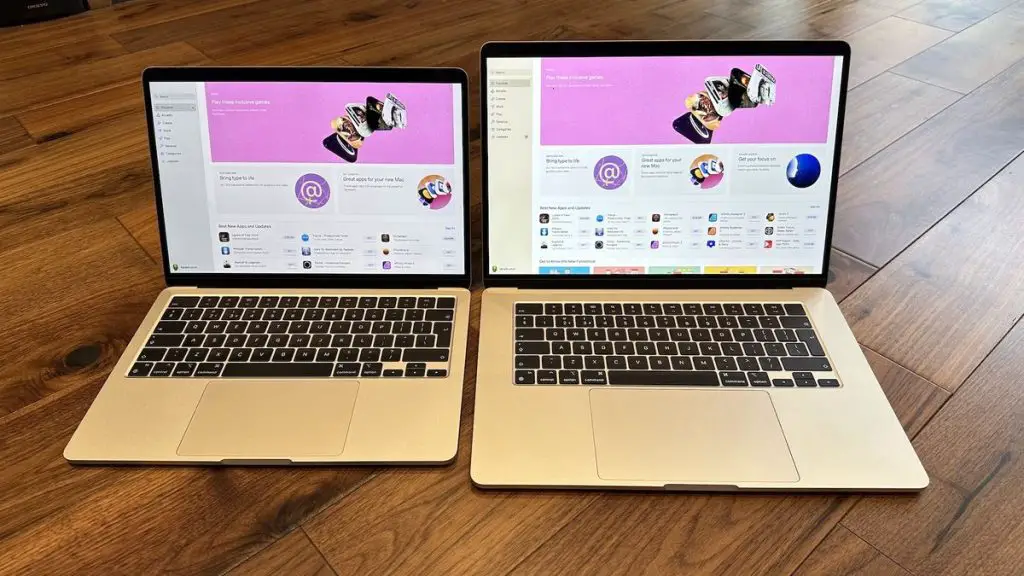Laptops have become an integral part of our daily lives, whether for work, entertainment, or study. When it comes to selecting a laptop, one crucial factor to consider is the size of the device. The two most common sizes are 14-inch and 15-inch laptops. Each size has its own set of advantages and disadvantages, and choosing between them largely depends on your specific needs and preferences. In this guide, we will compare 14-inch and 15-inch laptops to help you make an informed decision.
Portability vs. Screen Real Estate
14-Inch Laptops
Pros:
Portability: 14-inch laptops are generally more compact and lightweight than their 15-inch counterparts. They are easier to carry around, making them ideal for frequent travelers or those who need a laptop on the go.
Ergonomics: Smaller laptops are often easier to use in cramped spaces, like airplane trays or coffee shop tables.
Battery Life: Smaller screens tend to consume less power, which can result in longer battery life.
Cons:
Limited Screen Space: The smaller screen size can be a limitation if you require a lot of screen real estate for multitasking or creative work.
Reduced Keyboard Size: Smaller laptops may have slightly cramped keyboards, which could be less comfortable for extended typing sessions.
15-Inch Laptops
Pros:
Ample Screen Real Estate: 15-inch laptops offer a larger display, which is beneficial for tasks like video editing, graphic design, and gaming. It allows for better multitasking and a more immersive viewing experience.
Spacious Keyboard: The larger size of these laptops often results in a more comfortable and spacious keyboard layout.
Enhanced Cooling: Larger laptops can accommodate better cooling systems, which is important for performance-intensive tasks.
Cons:
Less Portable: 15-inch laptops are bulkier and heavier, making them less convenient for people who need to carry their laptops frequently.
Reduced Battery Life: The larger screen and more powerful components can drain the battery faster.
Performance and Use Cases
14-Inch Laptops
14-inch laptops are suitable for:
Casual web browsing and office tasks.
Lightweight productivity on the go.
Students who need a portable device for note-taking and studying.
15-Inch Laptops
15-inch laptops are suitable for:
Content creators and professionals who require a larger display for video editing, design, or programming.
Gamers who want a more immersive gaming experience.
Users who value a spacious keyboard for typing comfort.
Price Range
In general, 14-inch laptops tend to be more affordable than their 15-inch counterparts with similar specifications. If you have budget constraints, a 14-inch laptop may be the more economical choice.
Choosing between a 14-inch and a 15-inch laptop ultimately depends on your individual needs and preferences. If portability is a top priority, a 14-inch laptop is the way to go. On the other hand, if you need a larger screen for work or entertainment and don’t mind the added weight, a 15-inch laptop may be the better choice. Consider your usage patterns, budget, and mobility requirements carefully before making your decision. Additionally, it’s always a good idea to visit a physical store to test out different sizes and see which one feels more comfortable for you.
Additional Considerations
Before finalizing your decision, here are a few more factors to keep in mind when choosing between a 14-inch and a 15-inch laptop:
Resolution and Display Quality
Screen size is not the only important aspect of a laptop’s display. Consider the resolution and display quality as well. A 15-inch laptop with a higher resolution might offer a sharper and more detailed image compared to a lower-resolution 14-inch laptop.
Port Selection
Check the available ports on the laptop. Ensure it has the ports you need for your peripherals and accessories. Some smaller laptops may have limited port options due to their compact size.
Weight
While 14-inch laptops are generally lighter than 15-inch ones, it’s still essential to consider the weight, especially if you plan to carry your laptop frequently. A lightweight laptop is more comfortable to transport.
Build Quality
Pay attention to the build quality of the laptop. Look for features like a sturdy chassis and a comfortable keyboard and touchpad. A well-built laptop can enhance your overall user experience.
Performance Requirements
Consider your performance needs. If you require a high-performance laptop for demanding tasks like video editing, 3D rendering, or gaming, you may need to opt for a 15-inch laptop with more powerful components.
Upgradability
Check whether the laptop allows for easy hardware upgrades. Some smaller laptops may have limited upgradability, while larger ones may offer more customization options.
Operating System
Consider the operating system you prefer. Both Windows and macOS laptops are available in 14-inch and 15-inch sizes, but if you have a specific OS preference, it may narrow down your options.
Budget
Your budget will play a significant role in your decision-making process. While 14-inch laptops are generally more affordable, there is a wide range of price points for both sizes, so you can find a laptop that fits your budget.
User Reviews
Read user reviews and expert opinions about specific laptop models. Real-world experiences and reviews can provide valuable insights into a laptop’s performance, build quality, and overall satisfaction.
In conclusion, the choice between a 14-inch and a 15-inch laptop is a personal one, influenced by your unique needs and preferences. Take your time to research and consider all the factors mentioned above to ensure that the laptop you choose aligns perfectly with your computing requirements. Remember that both sizes offer a wide range of options, so you’re likely to find the ideal laptop that suits your lifestyle and computing demands.







